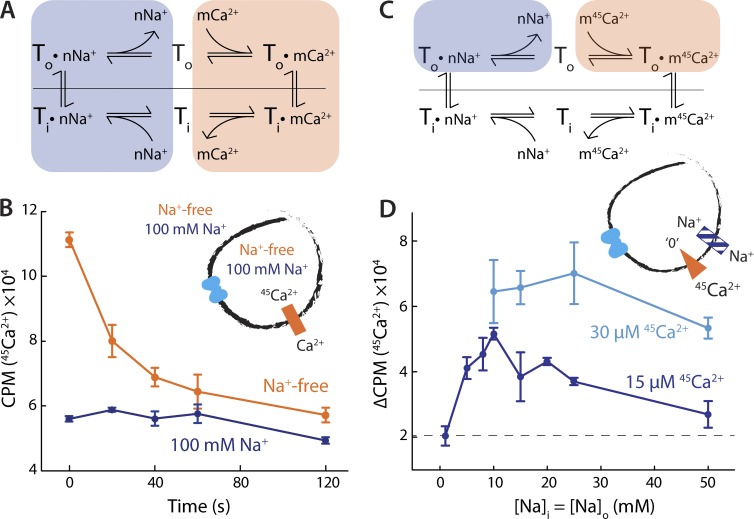Figure 3.
Na+ and Ca2+ compete for binding. (A) Antiport cycle of a prototypical NCX, highlighting the separate Na+/Na+ and Ca2+/Ca2+ exchange reactions postulated by the ping-pong model. (B) Ca2+/45Ca2+ exchange in Na+-free (orange) or saturating Na+ (blue) conditions. The liposomes were preloaded with buffer containing 50 µM 45CaCl2 and either 100 mM NaCl (blue) or 100 mM choline chloride (orange). In the external buffer, 45Ca2+ was substituted for the same concentration of CaCl2. Note that buffers for this experiment were valinomycin-free. A triplicate dataset is averaged (error bars represent SEM). This experiment was reproduced on three separate occasions. (C) Antiport cycle of a prototypical NCX, highlighting the process of external competitive binding to the transporter. (D) Initial rates of Na+/Ca2+ exchange as a function of [Na+], as external and internal concentrations were varied simultaneously. The liposomes were preloaded with 100 µM EGTA; either 30 µM (cyan) or 15 µM (blue) 45CaCl2 was applied to the reaction buffer. A triplicate dataset is averaged (error bars represent SEM).

